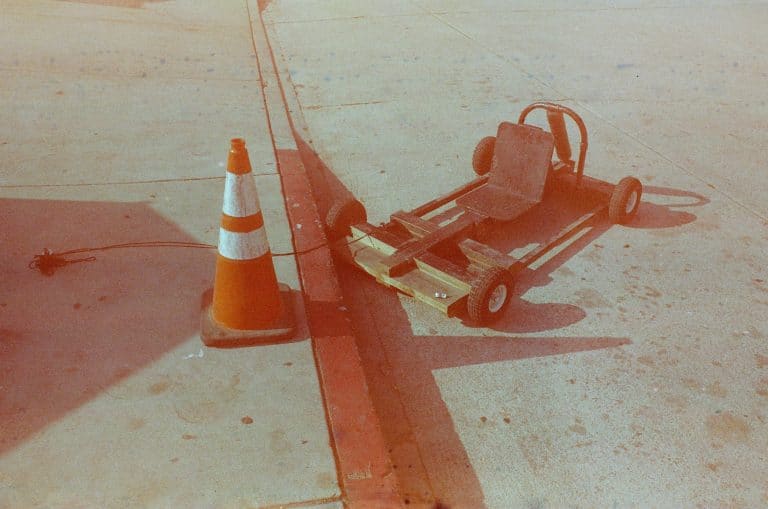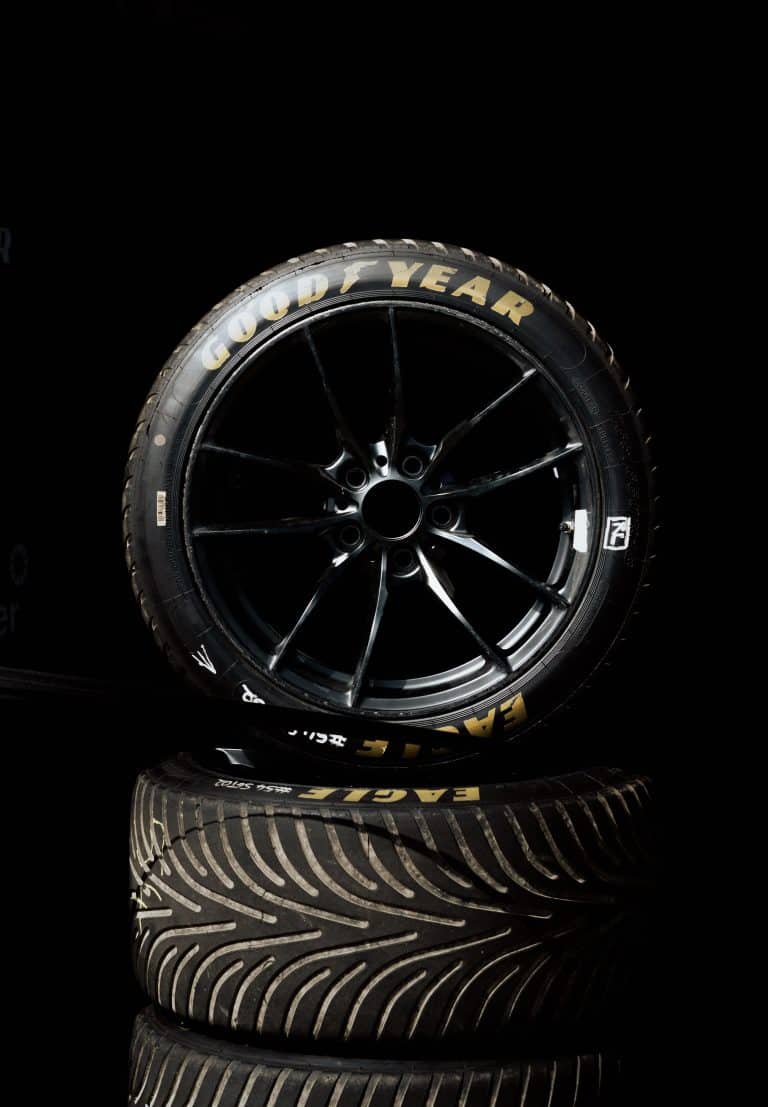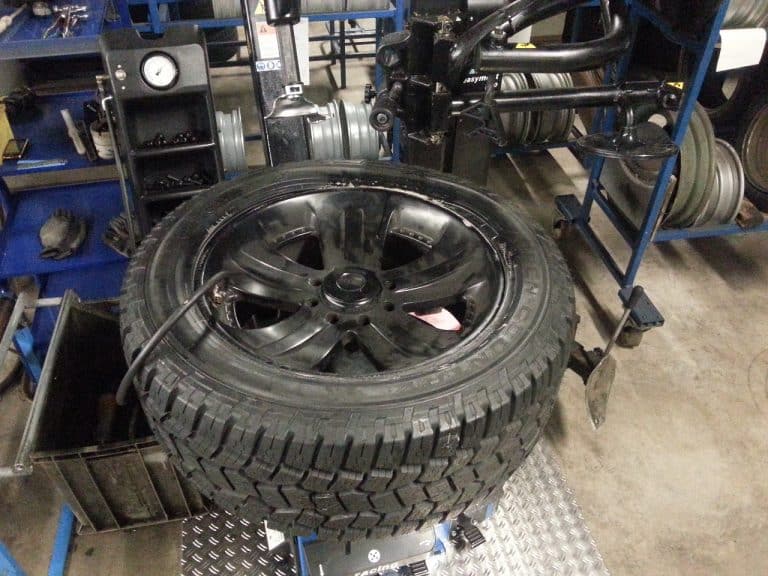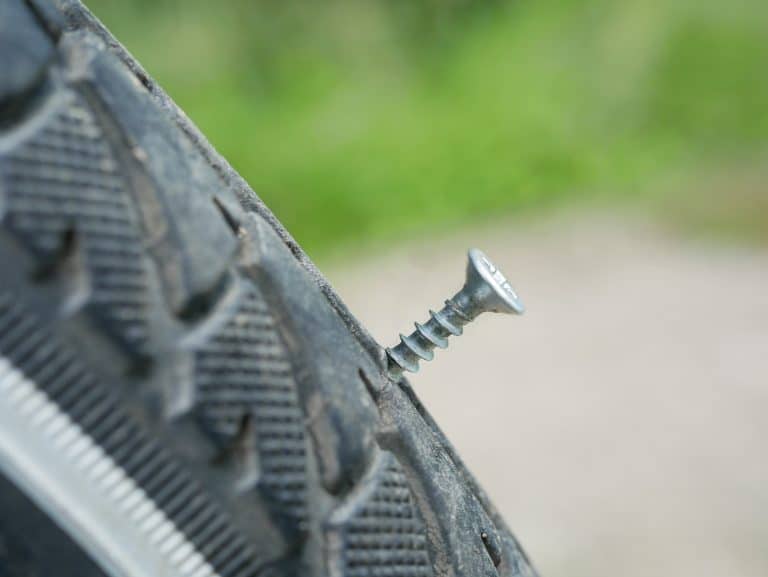How Much Do Tractor Tires Weigh?
Tractors are humongous machines normally used for agriculture, industrial and construction tasks. Though they weigh at least 20,000 pounds in total, they can still roll smoothly on rough terrains thanks to their tires being rated for such heavy duty chores. So the next question might be, how much do these tires weigh to support the hefty load of tractors?
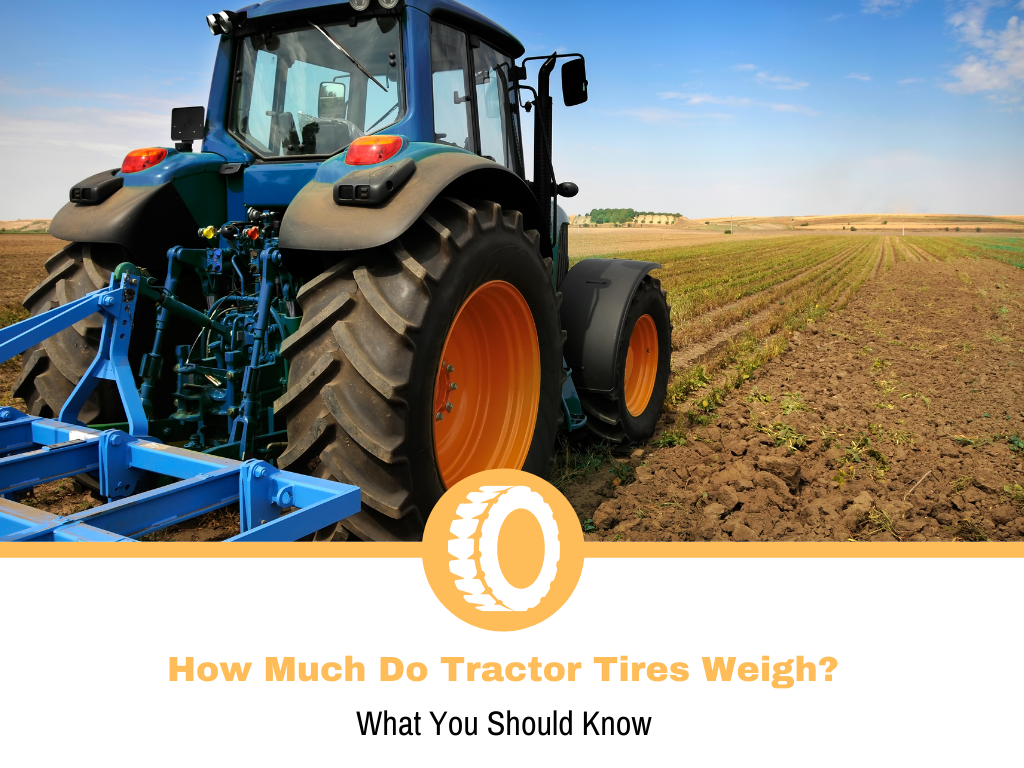
Tractor tires have a variety of weights and sizes depending on purpose. These range from 300-pound small size tractor tires to a whopping 1000-pound extra large tires. When those figures are added up for all four tires, your tractor tires may weigh 1,200 to 2,400 pounds.
According to the manufacturer’s tire selection, tractor tire size and weight should be matched with the tractor’s powertrain and gross weight, for maximum torque and efficient fuel consumption. That is why identifying the weight of your tractor’s tire is important in order to improve your tractor’s traction and efficiency.
What Is The Average Tractor Tire Weight Per Size?
Tractor tire weighs will vary based on size category. Small size tractor tires can weigh up to 300 pounds. Mid-sized tractor tires are 400 pounds or more, while large tractor tires weigh between 500-800 pounds. The heaviest type, also called extra-large, weighs up to 1,000 pounds.
Small Size Tractor Tires
The smallest tractor tires are 17.5 by 25 feet in size. These tires can weigh up to 300 pounds each. For comparison, a typical car tire only weighs 25 pounds, while a pickup tire will still be outweighed by a small size tractor tire by 100 pounds.
Medium or Mid-Sized Tractor Tires
The next size is called medium or mid-sized tractor tires. These tractor tires are approximately 20.5 by 25 feet in size. There isn’t much of a size difference between these and small-sized tractor tires. As a result, the weight of each medium-sized tractor tire is not significantly different from that of the small-sized tractor tire, despite the fact that each medium-sized tractor tire weighs 400 pounds or more.
Large Tractor Tires
Tractor tires measuring 23.5 by 25 feet are considered large tractor tires. They can weigh between 500 and 800 pounds each. However, some large tractor tires are lighter, weighing between 450 and 650 pounds. The weight of a tractor tire of this size is determined by its wear patterns and the amount of metal contained within.
Extra Large Tractor Tires
Lastly, the heaviest tire size is called ‘extra large’ with weights up to 1,000 pounds. Their combined weight adds approximately up to 4,000 pounds to the total weight of the tractor.
How Do You Measure the Weight of Your Tractor Tires?
Tractor tires are quite heavy and weighing them individually on a scale can be tiresome and impractical since you will need a crane to lift and place them securely.
Instead, you can determine their weight by identifying the dimensions of each tire indicated on the tire’s sidewall. When inspecting the tire’s sidewall, you will notice a 5-digit number. The first two digits are separated by a period, and the third and fourth numbers are separated by a dash. 16.9-30 is an example of these five digits.
These digits are not random. In this example, the 16.9 refers to the width of your tractor tire from one sidewall to the other. This is measured in inches. The 30 refers to the diameter of your tire’s rim, which is also measured in inches.
It appears to be fairly simple to determine the size and dimensions of your tires. However, this isn’t always the case because some measurements are in radial, metric, or standard units.
Radial Tractor Tires
Radial tractor tires are another thing to think about when it comes to tractor tires. The letter R, which denotes radial construction, can be found on radial tractor tires. Radial construction refers to any tire with cord piles that are 90 degrees. The cord heaps are moving in the same direction as your tires. You’ll also notice that the vast majority of tires are radial.
Radial tractor tires are identified by two digits followed by a point. Following the point, there is another number and a “R,” followed by two numbers. For example, values like 11.2R20 can be found on the sidewalls of radial tractor tires. A figure like this implies that the tire is a radial tractor tire.
Metric Tractor Tires
Also called European tires due to the measurement system they use, the digital figures on the sidewall are marked by a “R” and a slash. For example, 280/85R24 and 280/85R20.
Start with the first number, as that is the width of the tractor tire when properly inflated and mounted. If that number appears small, it is because it is expressed in millimeters rather than inches.
However, the aspect ratio relates to the second set of numbers. The aspect ratio illustrates the width of the tire in relation to its height after it has been inflated.
The letter R indicates the tire is made of radial material, which is typical in metric tractor tires. The number following the R denotes the wheel diameter for mounting.
Standard Tractor Tires
The first example above is a common tractor measurement. Those five-digit values are rather conventional and typical, yet you may come across five-digit dimensions such as 11.2X20. Don’t be perplexed by these seemingly disparate figures; they are all the same and represent the same thing. These values are simply another way of printing the measurements.
Tractor Tires Care Tips
Tractor tire care maintenance is different from regular passenger car tires mainly due to the nature of workload. That said, tractor tires need regular cleaning to prevent dirt buildup. Also, avoid driving on the pavement with them as much as possible. And since these tires are still subject for periodic replacement, don’t wait for them to severely wear out before replacing. Lastly, buy higher-quality tractor tires with a solid reputation in the industry.
Clean Your Tractor Tires
Dirt accumulates on and beneath your tractor during normal operations, particularly around the tires. If your tires are particularly filthy, Clean them after you use them at the end of the day.
Make use of water, soap, and a good tire brush. Get into the tire grooves and clean all the way to the bottom. Then, allow the tires to dry naturally. Clean tires perform better, which may allow you to enjoy them for a longer period of time.
Avoid driving on the pavement as much as possible
Tractor tires are not the same as car or truck tires. They are more suited for navigating softer ground such as mud, grass, or hay. You should try to limit your driving on the pavement as much as possible. Even though tractor tires can handle pavement, doing so is highly discouraged.
Don’t Wait to Get Replacement Tires
The longer you wait to replace those old, worn-out tires, the higher the risk. Your tire can pop at any time if you hit a sharp stone or other debris. The elasticity of the tire is sucked up by dry air and sun exposure, causing the material to crack.
Buy Quality Tires
It’s far better to spend considerable money upfront on higher-quality tires that will last you for years. You could spend several hundred dollars per tire, but cutting corners will cost you more money in the long run.
Conclusion
The weight of tractor tires can range from 200 pounds on the smallest up to 1,000 pounds each. Knowing the weight of your tractor’s tire can help you improve the traction and efficiency of your tractor wheels. You can determine the exact weight of each tire with careful calculations based on the dimensions provided at the sidewall.

